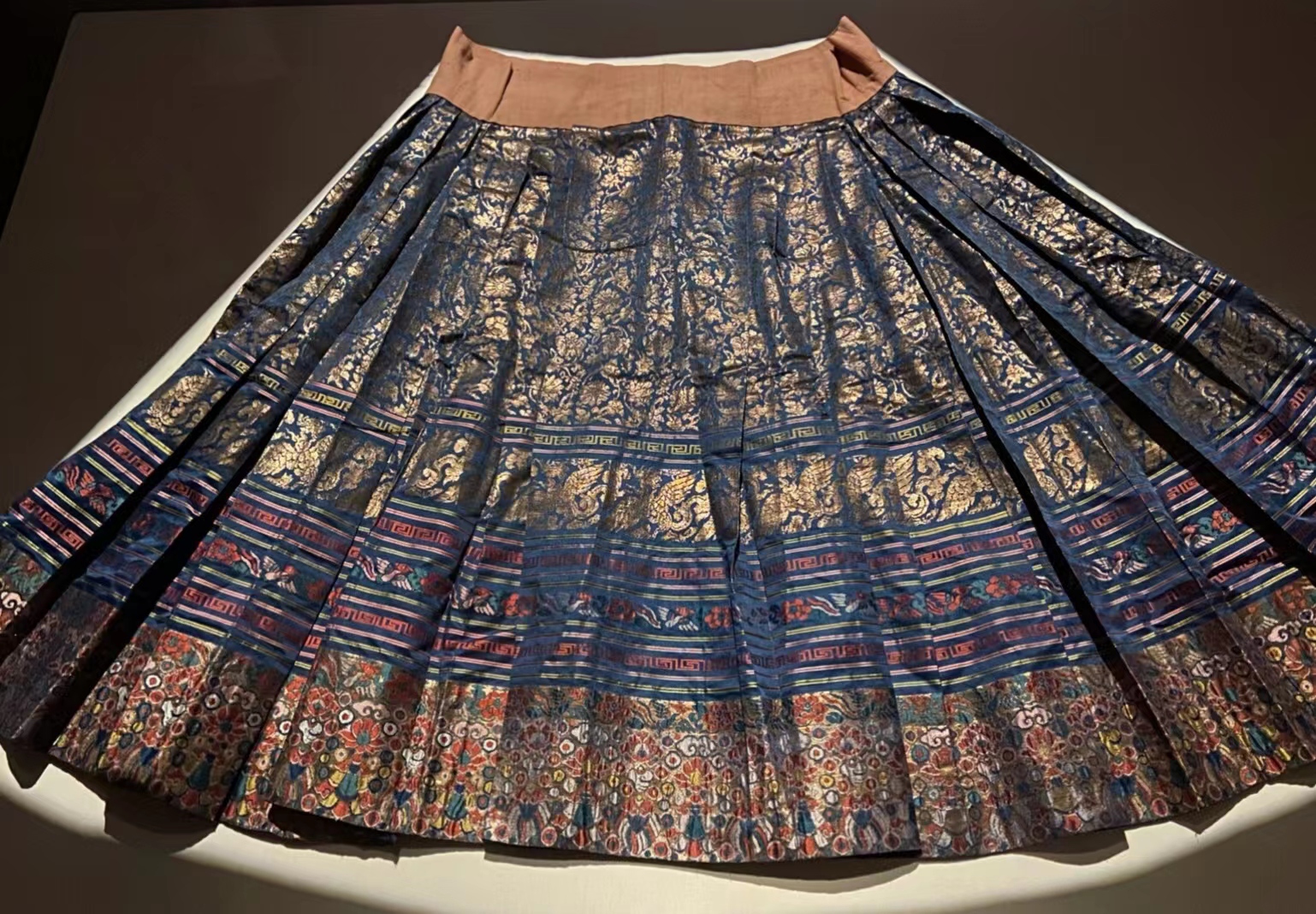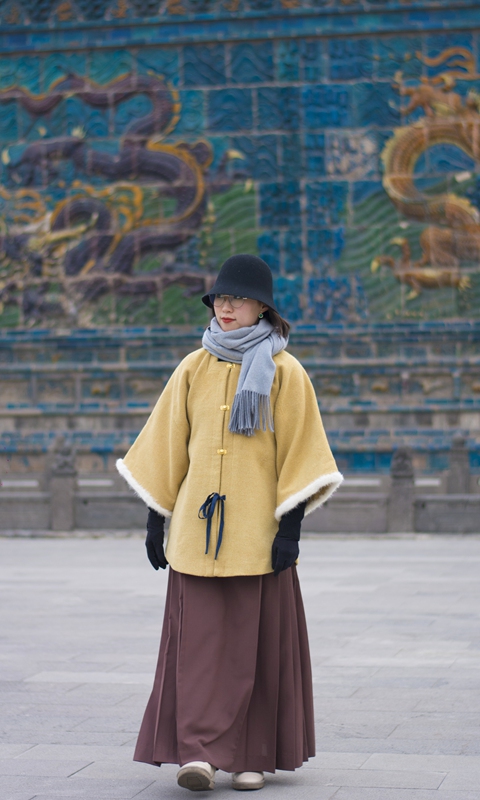
Mamianqun that is collected at the Shandong Museum Photo: Courtesy of Daben

Vlogger Daben poses for a photo in a traditional Chinese horse-face skirt. Photo: Courtesy of Daben
Editor's Note:
French fashion giant Christian Dior has been accused of culturally appropriating China's traditional horse-face skirt for an outfit in its Fall 2022 Collection. The controversy has continued developing as the brand has not officially responded to the accusations.
The horse-face skirt, or mamianqun in Chinese, holds a unique status among fans of traditional Chinese clothing. Through the introductions of experts and loyal fans, this skirt can give us a taste of the charm of ancient Chinese clothing.
"The horse-face skirt holds a very unique position in China's traditional clothing culture. Sporting a dynamic design, this skirt is widely preferred by fans of traditional clothing, who have continued to innovate and develop it," Daben, a Chinese vlogger who runs a channel that introduces traditional clothing culture on video sharing site Bilibili, told the Global Times.
Daben represents a huge number of Chinese fans of Hanfu - the traditional clothing worn by the Han ethnic majority - many of whom are still waiting for Dior to respond to the accusations that it has copied the design of the traditional horse-face skirt in its Fall 2022 clothing line.
The horse-face skirt originated in the Song Dynasty (960-1279) and grew popular during the Ming Dynasty (1368-1644) due to its functionality and aesthetic style.
Traditionally the horse-face skirt is composed of two identical overlapping panels of fabric that wrap around the left and right side of the lower body.
These two panels, each half of the skirt, are composed of a large rectangular panel of fabric, a side section made up of several smaller panels and another rectangular panel narrower than the first. Attached to a waistband by ties, the two sides overlap each other so that one of the large straight panels on each piece is in the front and back of the skirt.
This overlapping nature leaves openings in the front and back of the skirt, making them very suitable for horse-riding.
During the Ming Dynasty, deeply pleated versions of the skirt were extremely popular.
In the eyes of experts and fashion industry insiders, traditional Chinese clothing, represented by the horse-face skirt, is a significant symbol of Chinese civilization that has influenced Western fashion for many years.
"At the end of the last century, Chinese clothing had already begun influencing Western fashion because the unique 'lingering Asian charm' seen in clothing such as Hanfu was new to the West," Niu Hongjuan, a fashion historian, told the Global Times.
Looking to the past A Ming Dynasty horse-face skirt on display at the Shandong Museum is an outstanding example of this type of skirt. Since the controversy with Dior began in early July, it has once again captured people's attention.
Made of blue satin, the skirt is 88 centimeters long with a 104-centimeter waist line.
The upper part of the skirt is decorated with patterns of blooming flowers and an auspicious phoenix made of golden thread, while the bottom part sports a lotus weaved from colorful thread.
The skirt is a classic example of the simple and convenient style popular during the time period.
Another white horse-face skirt exhibited at the Shandong Museum is mainly decorated with flowers and birds. The upper part is less decorated than the lower half, giving viewers a feeling of simplicity mixed with elegance.
Niu explained that this kind of skirt shows the sense of generosity and grand elegance that is admired in Chinese culture. It is made from a single type of fabric for convenience, but the detailed pleats on the skirt reveal the ingenuity of Chinese design.
"The attention to detail shows that the spirit of the craftsman was rooted in East Asian philosophy."
Taking the horse-face skirt as an example, Daben talked about why she and her friends are crazy about traditional Chinese clothing.
"Knowing where we come from, we can then be clear about where we are going. Liking traditional clothing doesn't mean we have to dress like ancient people, but we should dig deep into our traditional culture, seek out our cultural tastes and confidence, and carry forward the aesthetic spirit of our nation," she said.
Basic respectNiu pointed out that Dior's skirt design is very controversial because its design highly resembles that of the horse-face skirt.
"The waist area and the pleating of Dior's skirt, especially in one section of fabric, seem to reference the Chinese horse-face skirt a great deal."
"But, this only borrows the very obvious features, since the aesthetics of the Chinese skirt go beyond just the design and include the fabric and the use of very elegant Chinese colors," Niu noted.
Fans of traditional Chinese clothing such as Daben and Xin Yingzong, a character designer who works for Pixar Animation Studios, have been exploring ways to promote the culture. They prefer to wear traditional clothing when taking part in cultural activities and taking photos of themselves to share the beauty of traditional clothing with other netizens on the internet.
They also work as content creators on popular video platforms such as Bilibili and Douyin, attracting more attention to traditional clothing.
All these efforts aim to expand the influence of traditional clothing and show its everlasting charm.
"We ask Dior to apologize for overlooking the inspiration their product got from the horse-face skirt. This is just basic respect for our culture," Daben said.
Zhang Yiwu, a professor at Peking University, told the Global Times that by using elements of the horse-face skirt while claiming their design is original, Dior has shown cultural arrogance and disrespect for Chinese culture.





